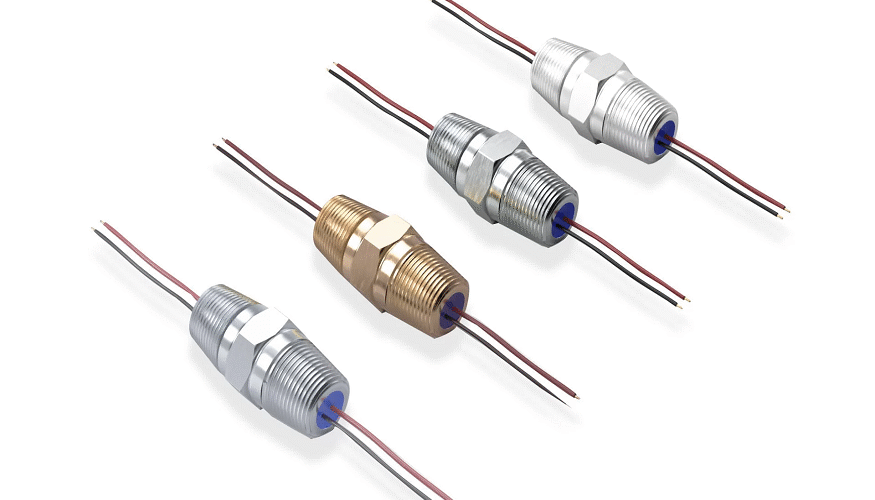Hermetic feedthroughs are critical components in industries requiring airtight or vacuum-sealed environments, such as aerospace, medical devices, industrial equipment, and scientific research. The choice of material—ceramics, glass, or metal—directly affects the performance, durability, and reliability of a feedthrough. Understanding the properties, applications, and benefits of each material type helps engineers and designers select the right solution for their systems.
What Is a Hermetic Feedthrough?
A hermetic feedthrough is a device that allows electrical, optical, or fluid connections to pass through a sealed barrier without compromising the environment inside. It prevents air, moisture, and contaminants from entering critical systems while maintaining electrical insulation and structural integrity. The materials used in feedthroughs are essential to achieving these goals, as they determine the component’s sealing ability, mechanical strength, and compatibility with extreme conditions.
Ceramic Feedthroughs
Ceramic feedthroughs are widely used in applications that require high temperature resistance, mechanical strength, and electrical insulation. Typically made from alumina (Al₂O₃), ceramics are fused with metal housings using brazing or metallization techniques.
Key Features:
- Exceptional thermal stability for high-temperature environments
- Excellent electrical insulation and dielectric strength
- High mechanical strength and resistance to vibration and shock
Applications:
- Aerospace and defense electronics
- Industrial furnaces and high-pressure systems
- Medical imaging and implantable devices
Ceramic feedthroughs are ideal for environments that experience extreme temperatures or mechanical stress, offering long-term reliability and durability.
Glass-to-Metal Feedthroughs
Glass-to-metal feedthroughs consist of metal pins embedded in a glass insulator, which is then fused to a metal housing. The glass provides airtight sealing and electrical insulation, while the metal ensures mechanical support and structural integrity.
Key Features:
- High vacuum sealing capability
- Excellent electrical insulation
- Good thermal expansion compatibility with metals like Kovar or stainless steel
Applications:
- Vacuum chambers and semiconductor equipment
- High-voltage electrical systems
- Scientific instrumentation and particle accelerators
Glass-to-metal feedthroughs are favored for high-vacuum and high-voltage applications where maintaining environmental integrity is crucial.
Metal Feedthroughs
Metal feedthroughs use solid metal structures to transmit signals while maintaining a hermetic seal, often with welding or brazing to secure the seal. While pure metal feedthroughs are less common than ceramic or glass variants, they are used when extreme durability and pressure resistance are required.
Key Features:
- High mechanical strength and robustness
- Excellent corrosion and chemical resistance
- Can handle extreme pressure and vibration conditions
Applications:
- High-pressure industrial systems
- Aerospace and military applications
- Harsh chemical or marine environments
Metal feedthroughs are particularly valuable in situations where mechanical stress, vibration, or chemical exposure could compromise ceramic or glass components.
Comparing Materials
When selecting feedthrough materials, consider the following:
| Material | Strengths | Limitations | Ideal Use |
| Ceramic | High thermal stability, electrical insulation, mechanical strength | Brittle, may crack under extreme shock | High-temp, aerospace, industrial |
| Glass | Excellent sealing, dielectric strength, vacuum compatibility | Limited mechanical strength | High-voltage, vacuum, scientific instruments |
| Metal | Extremely durable, pressure-resistant, corrosion-resistant | Less effective electrical insulation, may need coatings | High-pressure, chemical exposure, military |
Understanding the trade-offs between ceramic, glass, and metal feedthroughs ensures optimal selection for performance, reliability, and safety.
Factors to Consider When Choosing Feedthrough Materials
- Operating Environment: High temperatures, vacuum, moisture, or chemical exposure influence material choice.
- Electrical Requirements: Voltage, current, and signal type determine whether insulation properties or conductivity are most important.
- Mechanical Stress: Consider vibration, shock, and pressure conditions that the feedthrough will face.
- Longevity and Reliability: Choose materials that provide consistent performance over the device’s expected lifespan.
- Compatibility: Ensure thermal expansion coefficients of materials match for stable sealing.
Selecting the right material for your hermetic feedthrough is critical to preventing failure and maintaining the performance of your system.
Conclusion
Hermetic feedthroughs rely heavily on material choice for their performance, reliability, and longevity. Ceramics provide high-temperature stability and electrical insulation, glass ensures airtight sealing and vacuum compatibility, and metals offer mechanical strength and resistance to harsh environments. By understanding the strengths, limitations, and ideal applications of ceramics, glass, and metals, engineers and designers can make informed decisions, ensuring their high-tech, industrial, aerospace, or medical systems operate safely and effectively.

